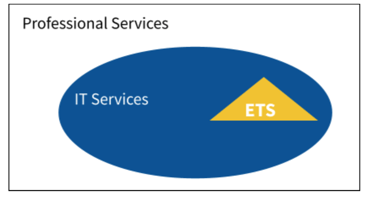Not all service companies are built alike, and nowhere is that truer than when it comes to...
From Mysteries To Puzzles: 5 Essential Questions for Your Tech Services Assessment
In our previous article, we slipped in a quiet revelation that your assessment should transform mysteries into puzzles. A tech services provider needs to be able to reshape a mystery into a puzzle to be a solution provider rather than staff augmentation.

Mysteries vs Puzzles
The national security researcher Gregory Taverton made the distinction between mysteries vs puzzles. Solving a puzzle is iterating until you get the correct information and putting it in the right place. But the answer to a mystery is contingent on future interactions of many factors. When we treat mysteries like puzzles, we start gathering more information, which increases the noise. And it makes the problem less tractable. According to Taverton:
"A mystery cannot be answered; it can only be framed, by identifying the critical factors and applying some sense of how they have interacted in the past and might interact in the future. A mystery is an attempt to define ambiguities."
When your customer comes to you as an expert looking to solve their problem, they deal with a mystery. As the expert, the most valuable thing you're bringing to the conversation is you provide them with the framing. Once that is in place, you work together to put the right pieces in place to solve the puzzle.
|
Mystery |
Puzzle |
|
Many inter-connected parts make it unclear how to solve the problem |
Complicated but still a linear path |
|
We are stuck because we don't know what information is useful and what isn't |
Information falls neatly into place. |
|
New information is just as likely to increase the noise and cause more confusion |
New information solves the problem |
|
To solve them you need the correct framing |
To solve them, you need to sequentially attack the issue |
Converting A Mystery To A Puzzle
Your assessment needs to answer these questions to convert the customer's mystery into a puzzle:
-
Why should we do this?
-
How do we solve the problem?
-
What does our journey look like?
-
What are the pitfalls and risks?
-
What are the open questions?
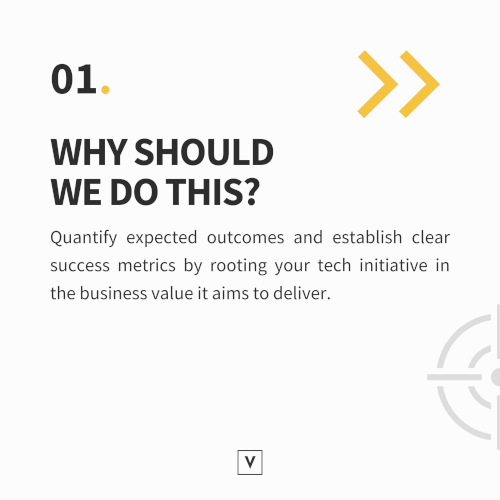
1. Why Should We Do This?
The genesis of any tech initiative must be rooted in the business value it aims to deliver. You should be able to define the business value as one of:
-
Unlock revenue
-
Reduce time to market
-
Reduce costs
-
Reduce risks
-
Improve customer experience
Identifying the 'why' sets the stage for a purpose-driven strategy. The answer to this question isn’t just about stating the objective but also quantifying the expected outcomes. This way, you establish clear success metrics right from the start.
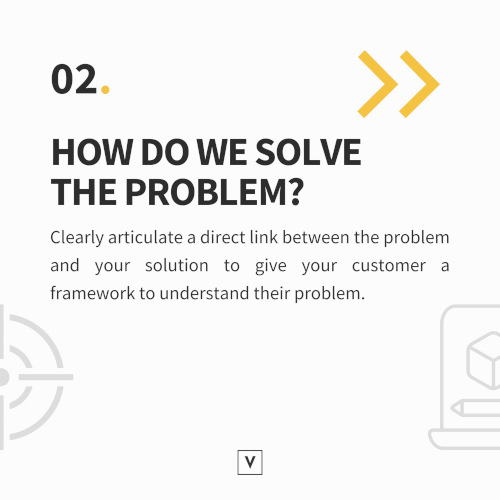
2. How Do We Solve the Problem?
Once the 'why' is clear, the 'how' becomes your blueprint. This part of the assessment requires you to:
-
Clearly articulate the proposed solution.
-
Establish a direct link between the problem and your solution.
-
Detail the technologies and integrations needed to complete the solution.
After establishing the blueprint, your customer has a framework to understand their problem. With this framework in place, we can create a final solution, communicate it effectively, and customize it to the specific needs of the customer.
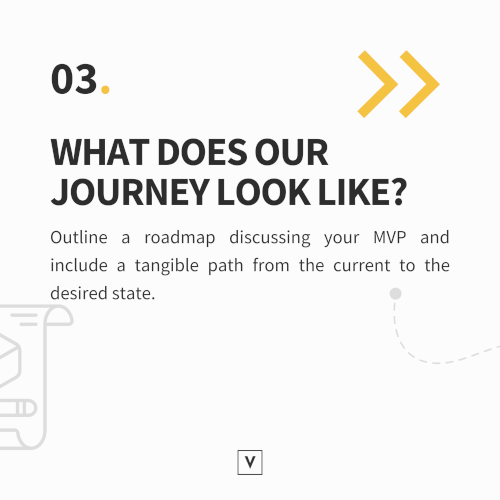
3. What Does Our Journey Look Like?
Implementing a tech solution is a journey with its own set of milestones and checkpoints. Your assessment must outline the implementation phases, specifying success at each stage. Discuss the Minimum Viable Product (MVP) and how it will evolve through iterations based on feedback and performance. This roadmap includes the plan and the process for getting from the current to the desired state, drawing a tangible path between the two.
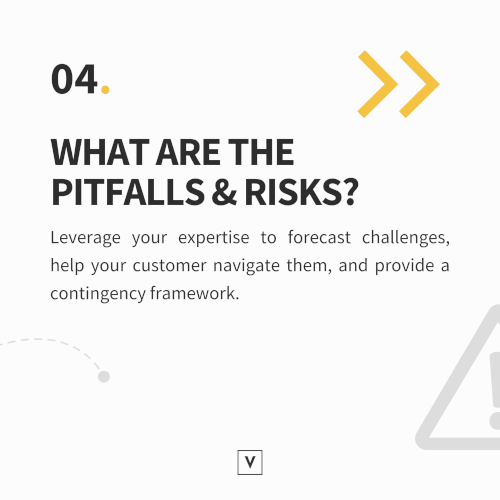
4. What Are The Pitfalls And Risks?
When deploying a new technology, customers face the risk of the unknown. As their expert guide, you are obliged to help them navigate through these decisions. Leverage your expertise to forecast the challenges and intricacies that might arise and provide a contingency framework to manage the risks.
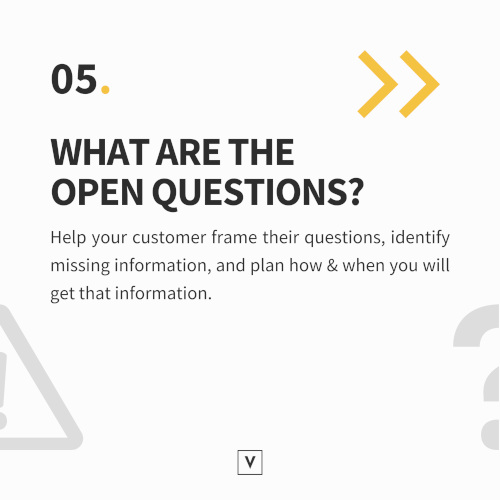
5. What Are The Open Questions?
Finally, you need to address the open questions for your customer. Your goal should be to:
-
Identify the questions your customer needs to answer based on your experience.
-
Help them frame the questions in the context of the overall solution.
-
Make decisions based on the information available
-
For decisions you cannot make, identify the missing information and include how and when you will get that information.
Your Path To Being A Solution Provider
The assessment is likely your first engagement with your customer. By turning the mystery into a puzzle, you start your relationship by adding real value to the customer, proving your competence in solving their problem, and creating a roadmap for them to engage with you. A well-designed assessment defines your relationship with your customer as a solution provider. We will continue to discuss how to define your tech services offerings. Please follow us on LinkedIn to keep up with our latest articles.




